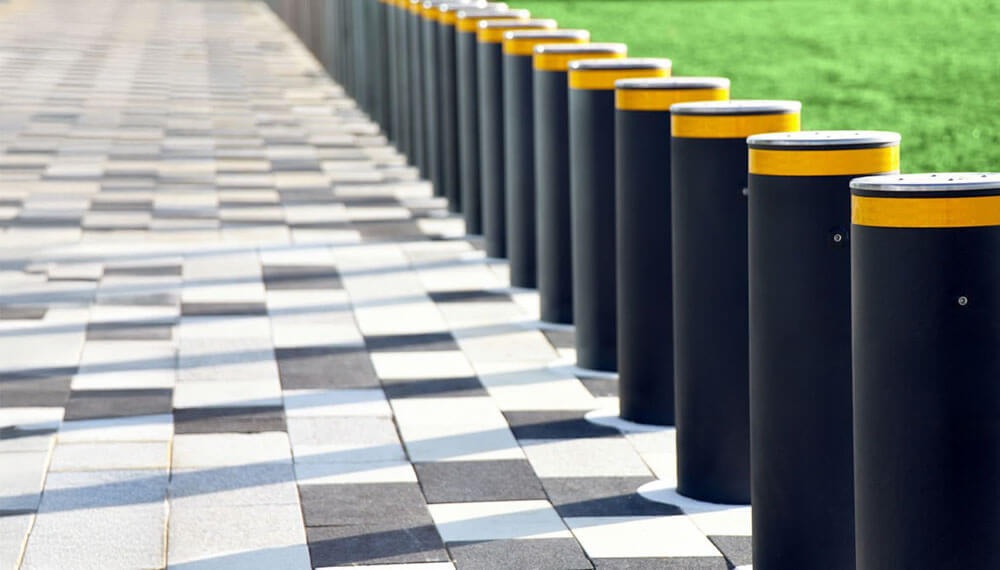
In urban environments, pedestrian safety remains a vital concern for city planners and local communities alike. As cities grow busier and the number of vehicles on the road increases, protecting pedestrians from potential hazards becomes paramount. One effective solution that has gained popularity is the installation of bollards. These short, sturdy posts serve multiple purposes beyond merely marking boundaries. Here, we explore five impactful ways in which bollards enhance safety for pedestrians.
1. Physical Protection from Vehicles
Perhaps the most significant function of bollards is their role as physical barriers against vehicles. In high-traffic areas, such as shopping districts, parks, and near schools, bollards can create a buffer zone that separates pedestrian walkways from the road. By acting as a deterrent, bollards minimize the risk of vehicular accidents involving pedestrians. In instances of errant vehicles or potential collisions, bollards can absorb some of the impact, providing an additional layer of protection for those walking nearby.
2. Improved Traffic Management
Bollards can also play a crucial role in traffic management. By clearly delineating pedestrian zones and directing the flow of vehicle traffic, they help minimize confusion for drivers and walkers alike. Strategically placed, they can prevent vehicles from entering pedestrian-only areas. This effective management not only reduces the likelihood of accidents but also enhances the overall pedestrian experience by creating more straightforward, safer passages. For instance, in park areas or near restaurant patios, bollards can help create a pleasing oasis where people feel comfortable lingering without the fear of nearby traffic.
3. Enhanced Visibility for Pedestrians
Visibility is another critical factor in pedestrian safety. In poorly lit areas or in conditions of reduced visibility, such as rain or fog, pedestrians may be at risk of being overlooked by drivers. Many modern bollards come equipped with reflective surfaces or integrated lighting, making them easily recognizable to motorists. Installing illuminated or reflective bollards along walkways and crosswalks can help ensure that pedestrians become more visible, particularly during nighttime or adverse weather conditions. Improved visibility can significantly reduce the chances of accidents, allowing for safer interactions between pedestrians and vehicles.
4. Creating Safe Outdoor Spaces
More than just barriers, bollards can help shape and enhance public spaces, making them safer for community gatherings. For example, in busy urban settings, the use of decorative bollards can define outdoor dining areas, festival zones, or recreational spaces. By limiting vehicle access to these zones, communities encourage social interaction and activities in a safer environment. Attractive bollards can complement the surrounding architecture and beautify streetscapes while ensuring that pedestrians can enjoy these spaces without the threat of encroaching vehicles.
5. Encouraging Bicycle and Pedestrian Use
Many cities are emphasizing biking and walking as viable modes of transportation to promote environmental sustainability and public health. Bollards can play a key role in encouraging the use of these alternative transport methods. By establishing dedicated bike lanes or pedestrian pathways that are protected by bollards, cities signal to residents that these modes of transport are safe and supported. When people feel confident walking or biking, it often leads to increased foot traffic in local businesses, reduced vehicle congestion, and a healthier overall community.
Conclusion
With increased urbanization and growing pedestrian populations, ensuring public safety has become a multifaceted challenge. Bollards, while often overlooked, present a straightforward and effective way to mitigate risks associated with vehicular traffic. By serving as physical barriers, enhancing visibility, supporting traffic management, creating safe public spaces, and promoting alternative modes of transport, they firmly establish themselves as vital components of pedestrian safety initiatives. As cities continue to grow and evolve, the integration of bollards into public safety strategies will be increasingly essential, helping to safeguard pedestrians and improve overall urban experiences.
In your next visit to a bustling city or park, take a moment to appreciate the humble bollard’s role in keeping you and your loved ones safe. They are more than just decorative posts—they represent a commitment to creating secure environments where the community can thrive.



